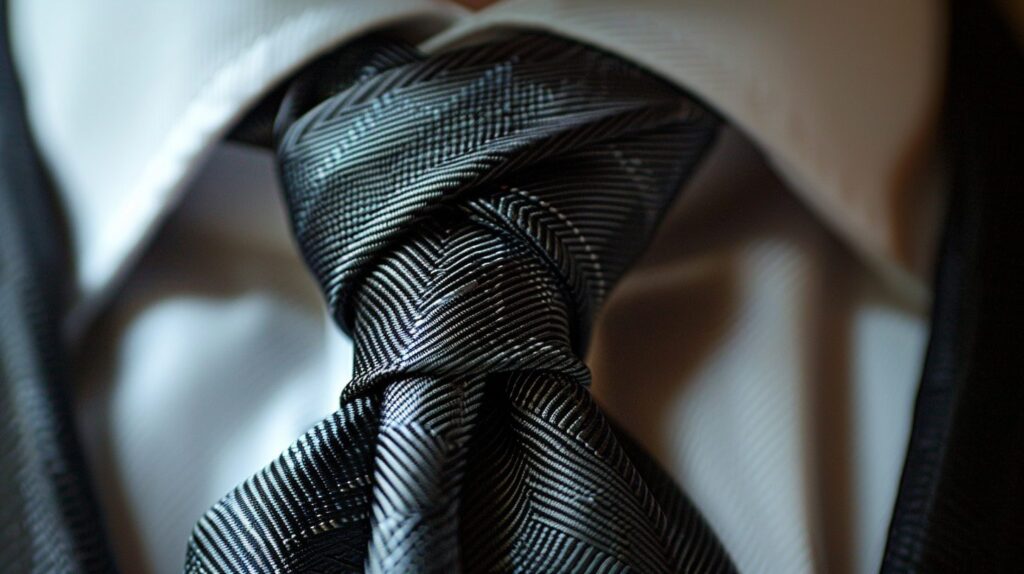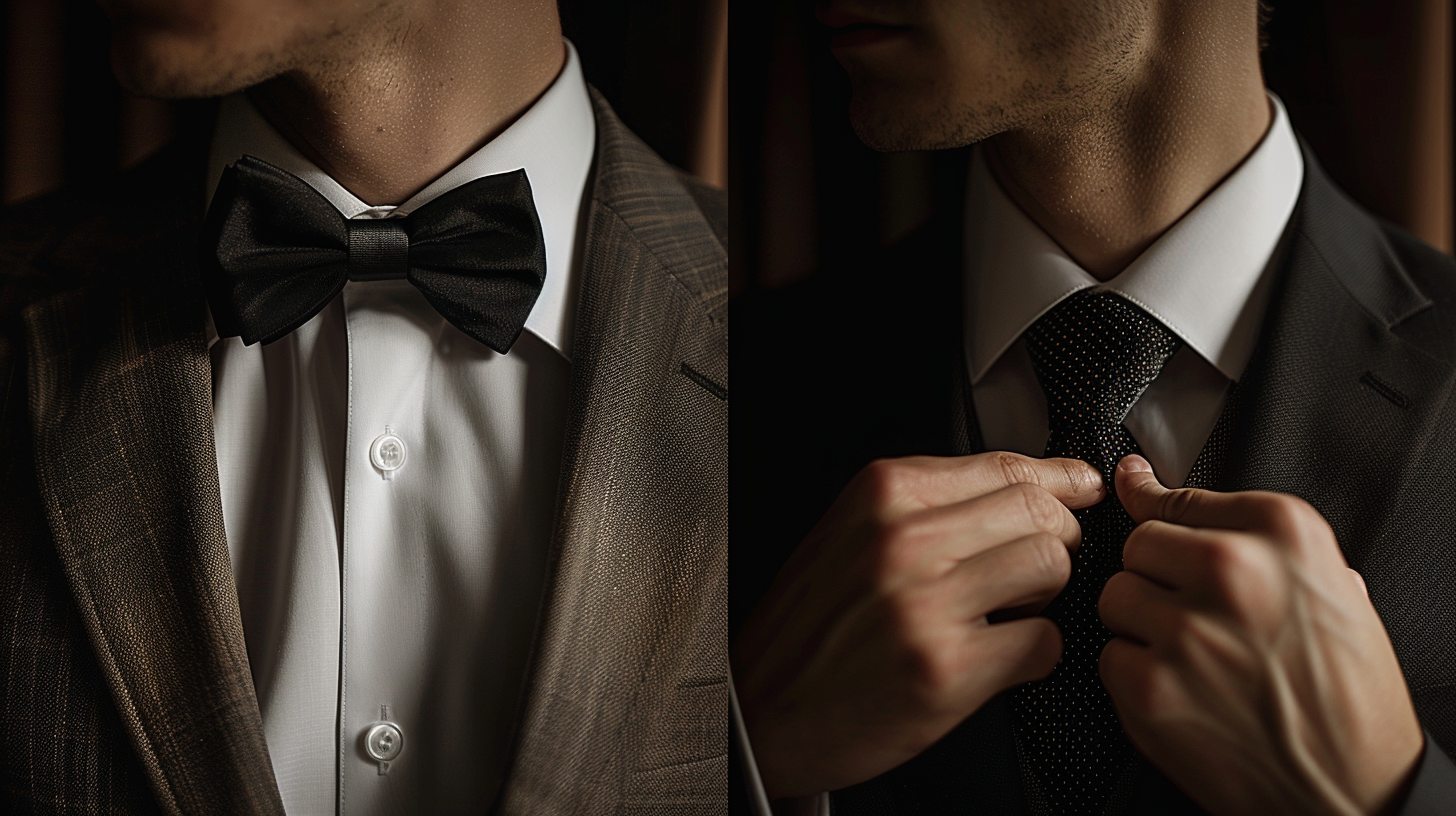Choosing the right neckwear can make or break your outfit. Discover the key differences in bow tie vs necktie.
Bow ties add instant formality and flair. Neckties offer versatility and ease for most occasions.
Learn when to wear each, how to match your outfit, and which knots or styles suit your event.
Use this guide to confidently pick between a bow tie or necktie and look sharp every time.
Here’s What You’ll Learn:
- When to wear a bow tie or necktie for weddings, black-tie, and casual events.
- Types of bow ties and necktie knots and their formality levels.
- How to match neckwear with shirts, suits, and tuxedos.
- Quick style tips to look polished and confident with either choice.
🎩 Formality of a Bow Tie
A bow tie instantly adds a touch of formality and confidence to your outfit. It’s most commonly seen with tuxedos and formal suits, especially for black-tie or white-tie events.
For semi-formal or creative settings, such as weddings or cocktail parties, you can wear a bow tie with a tailored suit or vest. Just keep the fabric and color in line with the dress code—silk for formal events, and cotton or wool for casual ones.
Bow Tie Types
Bow ties come in three main types:
Self-tie (freestyle)

You tie it yourself. This looks the most natural and shows personal style.
Pre-tied

Quick and neat but looks a bit stiff. Good for beginners.
Clip-on

Used mostly for children or uniforms. Avoid for formal events.
🎀 Occasions That Call for a Bow Tie
💍 Weddings
Perfect for grooms and groomsmen—it adds charm and personality.
🤵♂️ Black-Tie Events & Galas
A classic black silk bow tie completes any tuxedo look.
🤍 White-Tie Events
Wear a white bow tie with a tailcoat and stiff-front shirt—the height of formality.
🍸 Cocktail Parties
Try a patterned or velvet bow tie for a fun, stylish touch.
Versatility of Necktie
Neckties are more versatile and can fit almost any occasion—from the office to weddings. They work well with all types of suits and shirts, making them easy to match with your existing wardrobe. Neckties also offer endless styling options depending on the knot and width. If you’re ever unsure what to wear, a simple necktie is always a safe and stylish choice.
Types of Necktie Knots
The knot changes how formal or relaxed your tie looks.
Four-in-Hand

Simple and slightly asymmetrical. Ideal for daily wear.
Half Windsor

Balanced and semi-formal. Great for business.
Full Windsor

Wide and symmetrical. Perfect for formal settings.
Pratt Knot

Clean and classic. Good for medium-spread collars.
👔 Occasions That Call for a Necktie
💼 Business Settings
Essential for most offices—choose solid or subtle patterns.
🕴 Semi-Formal Events
Adds polish; pair with a blazer or sport coat.
💒 Weddings
Perfect unless it’s black-tie; match the theme or suit.
⛪ Religious Ceremonies
Shows respect—stick to dark, simple designs.
🎀 Your Neckwear Style Answers
👔 Should I wear a bow tie or necktie with a pleated shirt?
A bow tie is the better choice. It highlights the pleats and keeps your shirt front looking neat and balanced.
🤵 Should I wear a bow tie or necktie with a tuxedo?
Always choose a bow tie. A necktie makes a tuxedo look less formal and breaks the classic black-tie style.
💼 Should I wear a bow tie or necktie with a suit?
Either works—go with a bow tie if you want to show personality, or a necktie for a more traditional, professional look.
🚫 What if I don’t want to wear a tie?
Skip it only in casual or creative settings. Just make sure your shirt collar looks crisp and styled on purpose.
Style Takeaway
Bow ties bring formality and flair. Neckties offer flexibility and ease. If the event is formal—go with a bow tie. If it’s business or casual—choose a necktie. When unsure, pick the one that makes you feel confident and comfortable.

